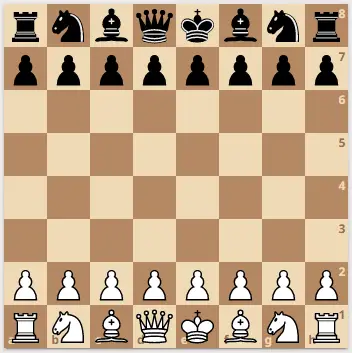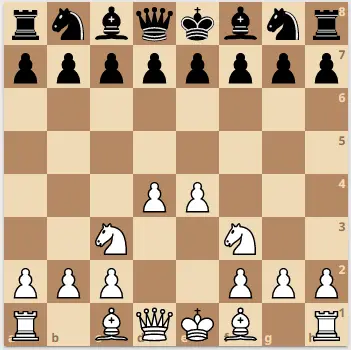Chess is a game that can be enjoyed by players of all skill levels. With endless opportunities for improvement, players can continue to hone their strategic thinking and planning skills over time.
Though there are several different variants of chess, classical chess remains extremely popular. So, what is classical chess, exactly?
Classical chess is the traditional form of chess that emphasizes strategic gameplay and careful planning. The objective of the game is to put the opponent’s king under checkmate.
Classical chess is standard chess played at a slower time control. For over the board matches, the time control for most of FIDE’s major events is 90 minutes for each player to complete the first 40 moves, followed by 30 minutes for the rest of the game, with an addition of 30 seconds per move starting from move one. For online matches, classical chess begins at a much shorter time control, which is 30 minutes per side.
In this post, we’ll explore the fascinating world of classical chess, from its basic rules to the most common strategies used by top players.
Classical Chess: An Overview
Classical chess is a popular traditional game that involves two players moving pieces on a board with 64 squares. The primary goal is to checkmate the opponent’s king. If neither player can do this, the game ends in a draw.
Starting position for classical chess

The best way to win classical chess is to outstrategize your opponent, and this requires careful planning and positional understanding of the game. This is why it’s important to not play quickly in classical chess as you’ll need enough time to construct a feasible winning plan.
The quality of games from classical significantly increases as players have more time to think over the chess board compared to faster time control formats such as rapid or blitz. Classical chess is all about analyzing the position and employing strategies to outsmart your opponent, which can take time. Victory requires a combination of strategic planning and tactical skill.
Here are some tips that will help you get better at classical chess:
- Play the early stages slowly
- No premoves
- No automatic moves
- Calculate at least two different variations per move
- Calculate variations learly until they are resolved. No guessing
- When you decide on a move, imagine it, and make one more check to make sure it is safe.
Basics of Classical Chess
Before we discuss advanced classical chess strategies, it’s imperative to have a solid grasp of the basics and rules of classical chess:
Pieces and Their Movements
With each player starting with 16 pieces, understanding the movements of each piece is crucial in mastering the game:
- King: This piece moves one square in any direction.
- Queen: This piece can move any number of squares: horizontally, vertically, or diagonally.
- Bishop: This piece can move any number of squares diagonally.
- Knight: The knight moves in an L-shaped pattern (two squares horizontally or vertically and one square perpendicular).
- Pawn: This tiny piece moves forward one or two squares on its initial move and only one square forward on subsequent moves.
- Capturing: Pawns can capture diagonally, and other pieces capture by moving to the square occupied by the opponent’s piece.
Special Moves and Rules
Special moves in classical chess can provide a strategic advantage for players:
- Castling: This move happens when the rook and the king move at the same time. The king moves two squares toward the rook while the rook moves to the square the king crossed. This move can only be done when neither of the two pieces has moved previously.
- En Passant (“In Passing”): This can occur when a pawn moves two squares on its first move and lands next to the other player’s pawn on its fifth rank. The other player’s pawn can capture the moving pawn as if it had only moved a single square forward.
- Stalemate: If a player cannot make a legal move on their turn and the king isn’t in check, the game is a draw due to a stalemate.
- Promotion: When a pawn reaches the opposite side of the board, it can be promoted to any other piece, except the king, depending on the player’s preference.
- Fifty-Move Rule: If no capture or pawn move has occurred in the last fifty moves, either player can claim a draw.
Common Strategies and Tactics in Classical Chess
Classical chess is a game that requires both strategic planning and tactical skill. There are a variety of common strategies and tactics that players can use:
Opening Strategies
The goal of the opening is to develop your pieces quickly. Some opening strategies include:
- Sicilian Defense: This strategy is a popular choice for those playing black. It allows for a lot of control of the center and can often lead to a counterattack.
- Queen’s Gambit: A strategy where the white sacrifices a pawn to gain control of the center and develop their pieces.
- Spanish Game: Balanced opening, both sides fighting for control of the center of the board.
Controlling the Center of the Board
The center is the most crucial area of the chessboard. It provides the most mobility for your pieces and allows you to control more squares.
Controlling the center of the board limits the activity of your opponent’s pieces while increasing the activity of your own pieces. One way of controlling the center of the board is by simply advancing your pawns forward to the central squares namely e4, d4, e5, and d5.
The Classical approach to chess openings involves controlling the center directly with pawns and pieces

Most common classical setup for white
Basic Tactics
Tactics are used to secure an advantage. Some common tactics include:
- Fork: This tactic involves attacking multiple pieces at once.
- Pin: The pin tactic is used to restrict a piece’s movement because it’s guarding a more valuable piece.
- Decoy: The decoy tactic involves sacrificing one piece to lure an opponent’s piece to a specific location.
- Trapping: This tactic is used to confine an opponent’s piece to a small area of the board, leaving it vulnerable.
- Deflection: By using deflection, a player can force an opponent’s piece to move away from a key square or defensive position.
Classical Chess Legends
Let’s take a look at some of the most iconic players in the history of classical chess:
Gary Kasparov
Widely considered as one of the chess greatest players of all time, Kasparov remained a world champion for 15 years in the 80s and 90s.
Anatoly Karpov
Anatoly Karpov, a long-time rival to Kasparov, held the world champion title for 10 years. He was known for his defensive play style.
Bobby Fischer
Fischer was an American player who became the world champion in 1972. He was known for his aggressive play style and eccentric personality.
Emanuel Lasker
Emanuel Lasker became the second world champion and held the title for 27 years. He was renowned for his strategic and defensive play style.
Matches That Shaped the History of Classical Chess
Throughout the history of classical chess, these are some of the notable matches that left a mark on the game:
Spassky-Fischer (1972)
The Spassky-Fischer World Championship in 1972 was a highly anticipated match between the two greatest chess players of all time.
It happened during the Cold War, with Spassky representing the Soviet Union and Fischer representing the United States.
Fischer reigned victorious, becoming the first American to win the World Chess Championship.
Karpov-Kasparov (1985)
One of the most intense and grueling matches in the history of classical chess was the 1985 Karpov-Kasparov match.
The two players battled it out over 5 months in a best-of-24 game! Kasparov won and became the youngest undisputed World Champion at 22 years.
Deep Blue-Kasparov (1997)
In 1997, world champion Gary Kasparov played against the IBM computer program Deep Blue in a six-game match.
Kasparov won the first game, lost the second, and the final game ended in a draw, resulting in Deep Blue’s victory.
This event marked the first time a computer program defeated a reigning world champion in chess.
Conclusion
Classical chess has had a captivating and diverse history for centuries. From its origins in India, it has captivated players and audiences worldwide.
Iconic players and matches have influenced the timeless game of chess, creating a legacy that inspires enthusiasts today. As chess adapts to modern times, its timeless appeal will ensure its popularity for future generations.


